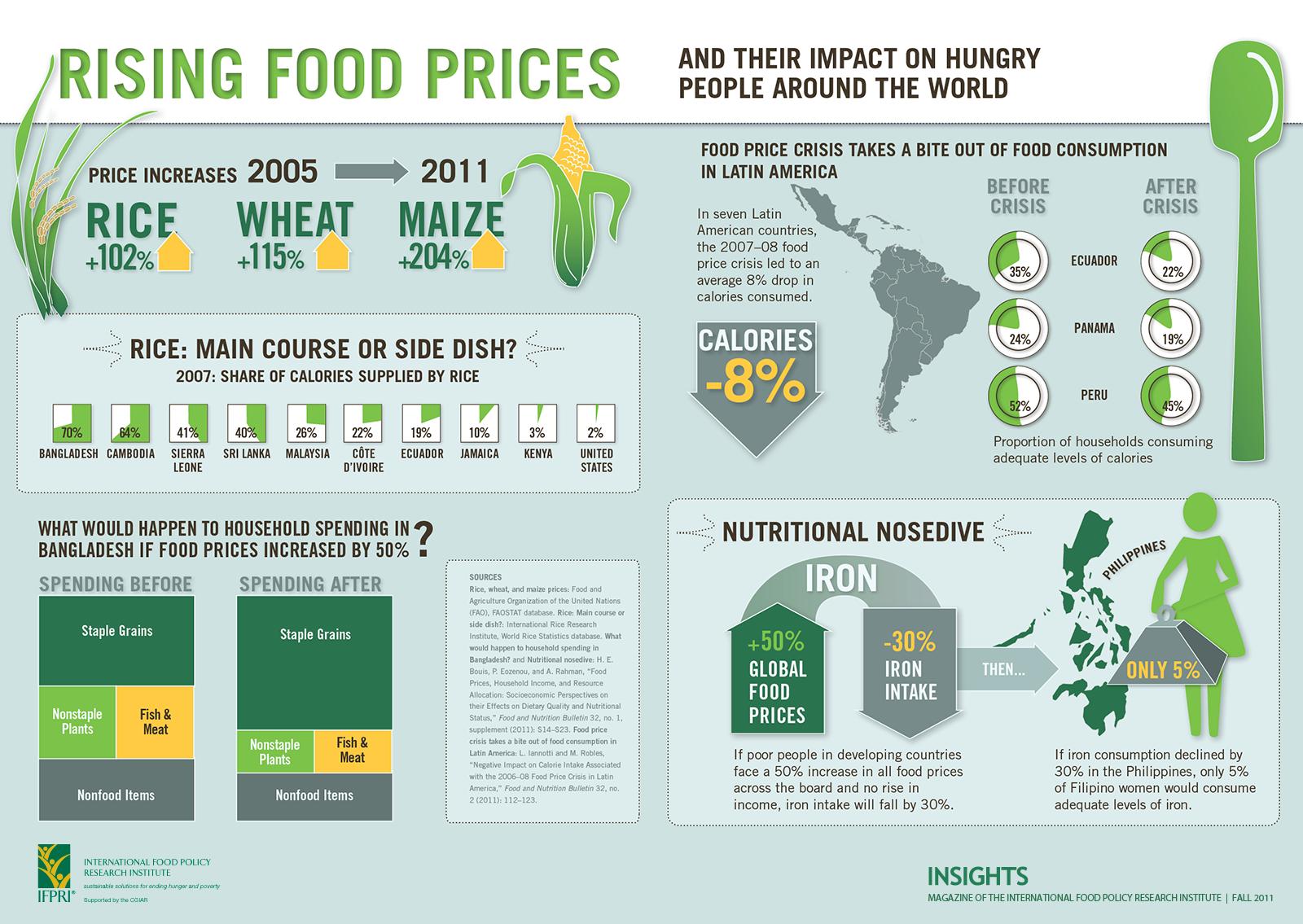
"When you have food prices that peak, you have all these riots. But look under the peaks, at the background trend. That's increasing quite rapidly, too," said Yaneer Bar-Yam, president of NECSI, in an interview with Wired Science. "In one to two years, the background trend runs into the place where all hell breaks loose."
Social unrest, the NECSI report explained, often reflects severe cases of poverty, unemployment, and injustice. While food prices might not be the primary cause of protests, it provides a platform for populations to revolt.
"When the ability of the political system to provide security for the population breaks down, popular support disappears. Conditions of widespread threat to security are particularly present when food is inaccessible to the population at large," said Bar-Yam. "All support for the system and allowance for its failings are lost. The loss of support occurs even if the political system is not directly responsible for the food security failure, as is the case if the primary responsibility lies in the global food supply system."
In February 2011, the World Bank released a Food Price Watch report that determined over 44 million people worldwide were being driven to starvation by rising global food prices. The U.S. Department of State recorded over 60 riots around the world between 2008 and 2011, including parts of northern Africa, the Middle East, Tunisia and Egypt.
The NECSI report analyzes where background trends of food prices and statistical points of social unrest meet, or where social turmoil is most likely.
An article in The New York Times names four reasons for the upward trends in prices: weather, higher demand, smaller yields, and crops diverted to biofuels. The Food Crises and Political Instability report doesn't simply compile the correlation between food prices and political uprisings, but also projects a certain global threshold when food price trends might rise significantly enough to spark global unrest. According to the NECSI, the world will reach its food price threshold in August 2013.
"Our predictions are conditional on the circumstances, and thus allow for policy interventions to change them. Whether policymakers will act depends on the various pressures that are applied to them, including both the public and special interests," said Professor Bar-Yam.
Reversing the predictions of NECSI's report will take quick and controversial policy changes by individual governments around the world.
What policy changes have your government officials taken to combat rising food prices?
To purchase State of the World 2011: Innovations that Nourish the Planet please click HERE. And to watch the one-minute book trailer, click HERE.



Don't know who this group's funders are, but there seem to be so many of these reports lately, that it makes me wonder if this isn't part of the engineered solution? What was that film called? Soylent Green? This report almost seems a think-tanks way of presenting the intellectual scare tactics necessary for preparing the public for their inevitable role in the play as planned. Why don't they just show us the script and make it easier for us to volunteer? Maybe Keshia isn't aware of the game she is playing? For we each must play our part it is said. Is the data correct? Perhaps, why not? If the truth works, why not use it? Make no suggestions for solution, just present the facts as you see them. So, how is her or the group's eyesight? Exactly how much do they 'see'?